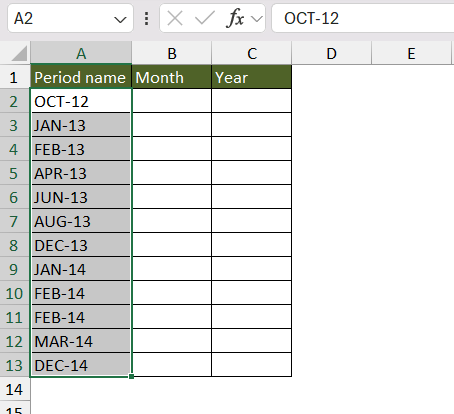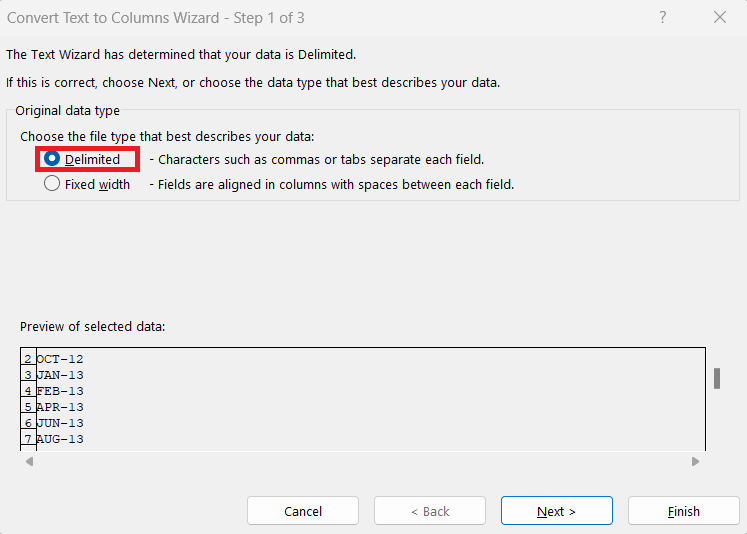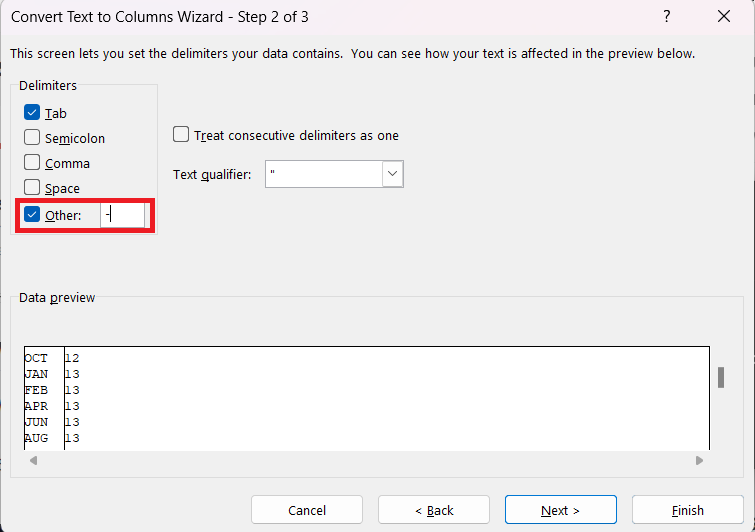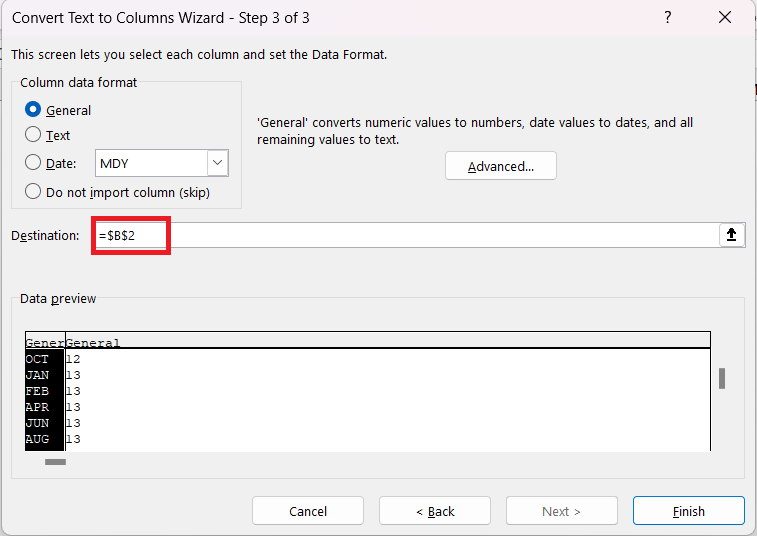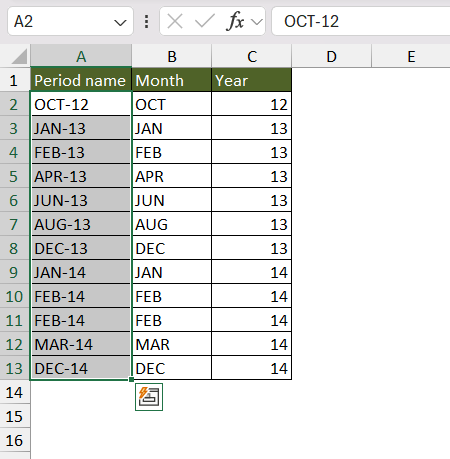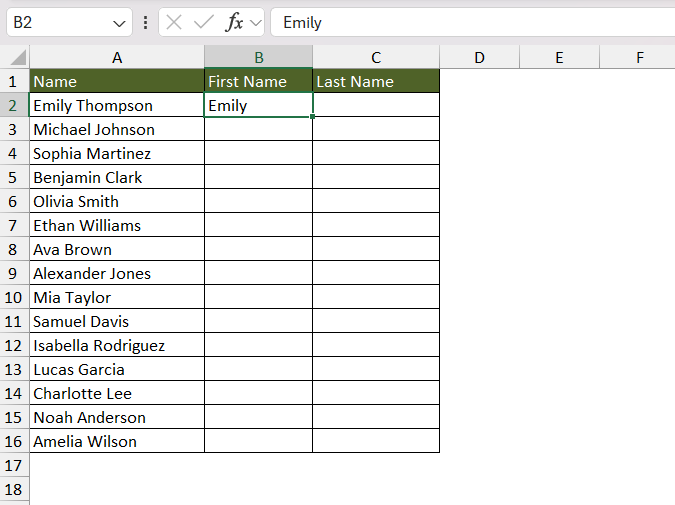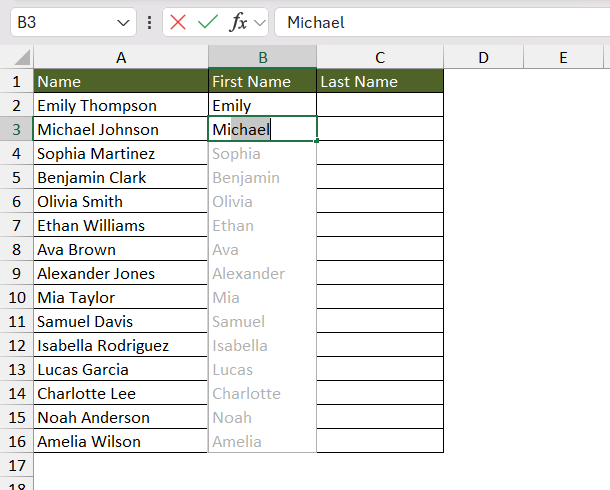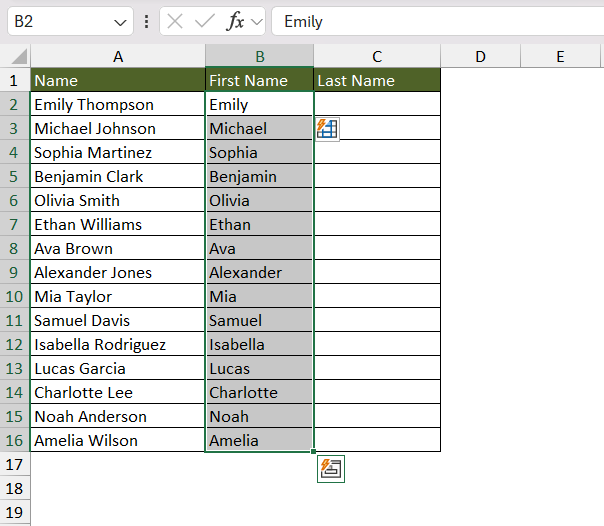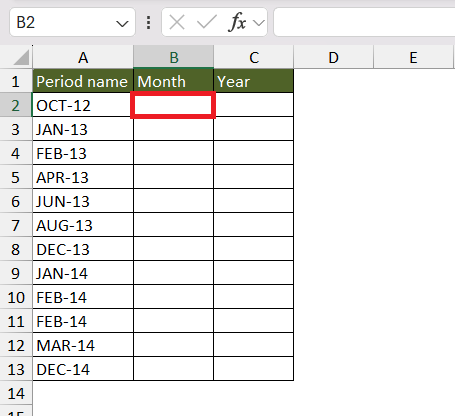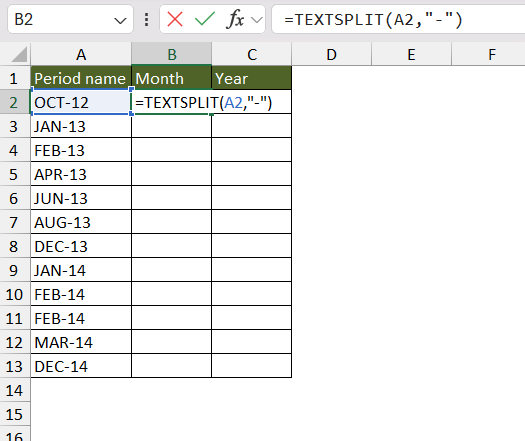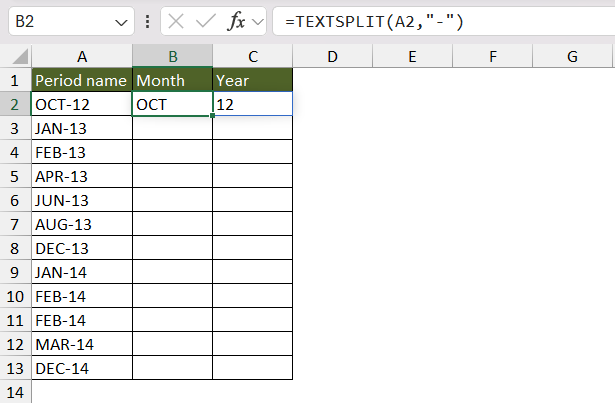The article dives into the essential techniques of concatenate function and the opposite of concatenate in Microsoft Excel. It explores how these processes can enhance data analysis by enabling better organization, increased accuracy, and straightforward data manipulation.
Key Takeaways
- Concatenation is a powerful tool in Excel for merging text strings, numbers, and dates into a single coherent format, crucial for organizing and analyzing data.
- Text-to-Columns is a classic feature for separating data based on specified delimiters, but it overwrites original data, highlighting the importance of duplicating data beforehand.
- Flash Fill simplifies data splitting by recognizing patterns and automating the separation process, though it’s not dynamic and requires reapplication if source data changes.
- Advanced formulas and functions, like TEXTSPLIT (exclusive to Excel 365), offer precise and customizable solutions for splitting concatenated data, accommodating more complex data manipulation needs.
Table of Contents
Introduction to Excel String Maneuvers
The Power of Concatenation: What It Is and What It Does
Concatenation is a fundamental operation in data manipulation that involves merging two or more strings to form a single string. It enables the seamless combination of text strings, numbers, and dates, facilitating the creation of coherent and comprehensive data formats in Excel workbooks. This powerful tool is essential not only for organizing and structuring data but also for preparing it for analysis by connecting disparate pieces of information into a unified whole.
Exploring the Need for Reversing Concatenation
When working with Excel, you often come across situations where data comes in one block instead of neatly segmented columns. But why bother reversing the process? Here’s why reversing concatenation can be just as powerful as performing it:
- More straightforward data analysis: Once the data is split into separate cells, analyzing and manipulating it becomes a walk in the park. Excel functions like sorting and creating PivotTables require data to be in distinct columns for optimum performance.
- Better organization: It’s not just about the data; it’s also about your peace of mind. Data that is well-organized reads better and reduces complexity for anyone revisiting the spreadsheet.
- Improved accuracy: Ensuring data is in the right place is crucial. Split data can help minimize entry and manipulation errors and provide a clearer view to identify any discrepancies quickly.
Let’s peel back the layers of your data by learning how to reverse concatenate in Excel.
Diving Into the Opposite of Concatenate
Text-to-Columns: The Classic Solution
Text-to-Columns is your go-to feature in Excel when you need to separate text from one column into multiple columns, effectively unwinding what concatenate does. Here’s how to put this classic function to use:
STEP 1: Select your data range: Just click and drag to highlight the cells containing the combined data that you intend to split.
STEP 2: Find the feature on your ribbon: Navigate to the Data tab and locate the ‘Text to Columns’ button within the Data Tools group.
STEP 3: Choose your file type: Upon clicking ‘Text to Columns,’ a wizard will appear. Select ‘Delimited’ to separate your data based on characters such as commas or tabs.
STEP 4: Specify delimiters: Proceed and check or uncheck the boxes for various delimiters such as commas, tabs, or spaces – whichever is separating your data in the current setup.
STEP 5: Specify destination: Input the destination cell and press Finish.
And there you have it! Within moments, Excel dissects your singular column into discernible sections facilitating better data management. Keep in mind that Text-to-Columns will overwrite original data, so consider duplicating your sheet beforehand if preservation is key.
Top Tip: To prevent data loss, always duplicate your original data before using Text-to-Columns. This ensures that you can always return to your starting point if needed.
Flash Fill Magic: Excel’s Quick Fix
Welcome to the world of Flash Fill, Excel’s dazzling feature that simplifies the once-tedious task of splitting data. If you’re working with Excel 2013 or a later version, this trick will feel like a sprinkle of fairy dust over your spreadsheet. Here’s how it transforms your data:
- Intuitive Pattern Recognition: Start by manually entering the desired split data for the first couple of rows. Excel’s Flash Fill senses your pattern and tries to autocomplete the rest.
- Time-Saver: Forget about concocting complex formulas; Flash Fill does the heavy lifting with just a couple of keystrokes.
- Versatile: Whether you’re separating names, dates, or any other alphanumeric combination, Flash Fill adjusts to a variety of patterns with ease.
To activate this spell:
STEP 1: Initiate the Process: Begin by typing the split data in the cell directly next to your concatenated one. For example, if you’re pulling a first name from a full name, type it out in full for the first row.
STEP 2: Let Excel Step In: Continue to the second row with the corresponding split data. Watch as Excel’s Flash Fill offers to complete the rest for you.
STEP 3: Seal the Deal: If the suggestion is correct, pressing the Enter key applies the Flash Fill for all subsequent cells. If it’s not, or if Flash Fill doesn’t kick in automatically, select the cells you need to fill, go to the Data tab, click on ‘Flash Fill’, or simply press Ctrl+E.
A caveat, however: Flash Fill is not dynamic—which means if your source data changes, you’ll need to reapply Flash Fill to reflect those changes. Despite this, Flash Fill remains an indispensable quick fix for reversing concatenation.
Remember, Flash Fill is like that friend who finishes your sentences—quick, and helpful, but not always perfect. Double-check to ensure all your data matches up as it should.
Split using the TEXTSPLIT function
At times, a dash of precision is what you require to separate text strings in Excel, which is where delicately crafted formulas come into play—specifically, the TEXT function. However, if you’re seeking a built-in tool designed explicitly for splitting concatenated text, you might find the TEXT function alone a bit limited, since it’s primarily used for formatting numbers into text strings with a specified format.
To unravel concatenated text, Excel offers a newer function crafted for the purpose—TEXTSPLIT, available exclusively in Excel 365. With TEXTSPLIT, you can split text strings using specified delimiters, effectively doing the reverse of concatenation.
Here’s how you’d go about it:
STEP 1: Select your destination cell: Click on the cell where you’d like your split text to begin dispersing.
STEP 2: Enter the TEXTSPLIT formula: Invoke the function using =TEXTSPLIT(source_cell, “delimiter”) with your source cell reference and delimiter, such as a comma or space.
STEP 3: Execute and Expand: Hitting Enter will spill the split text across adjacent cells automatically.
The TEXTSPLIT function is dynamic—which means any changes to your source data will immediately be reflected in your split text, keeping your spreadsheet live and adaptable. Unfortunately, for earlier Excel versions, you’d have to rely on more static methods like the Text-to-Columns tool or Flash Fill feature.
Note: The TEXTSPLIT function is a game-changer for those on the latest Excel subscription but remains out of reach for users on older versions. Stay tuned for alternative formulas that can emulate (albeit with less elegance) what TEXTSPLIT achieves for Excel 365 enthusiasts.
Optimizing Your Workflow in Excel
Tips for Efficient Data Management
Efficiency is the name of the game when it comes to managing data in Excel. To streamline the unconcatenating process and maintain spreadsheet heaven, consider these tips:
- Start Clean: Before diving into splitting data, ensure that your dataset is free from trailing spaces, irregular capitalization, and other inconsistencies which could cause issues during the split.
- Backup Beforehand: Always keep a copy of the original data intact. This allows you to start over without losing data should something not split as expected.
- Use Tables: Converting your range into a table (Ctrl + T) can make managing and referencing your data more effective.
- Employ Named Ranges: Create named ranges for cells that you refer to often within formulas. It simplifies formula reading and reduces errors.
- Automate Frequently Used Processes: If you find yourself unconcatenating regularly, consider recording a macro to automate the process and save time.
Remember, investing time in setting up your spreadsheet correctly from the outset can save countless hours down the road.
The Golden Rule: Keep your workflow simple and your data cleaner. Less clutter and a touch of Excel wizardry go a long way towards maintaining sanity in the number-crunching realm.
Best Practices for Cleaner Spreadsheets
Crafting a pristine spreadsheet is an art as much as it is a science. By adopting these best practices, your workbooks will not only look professional but also function smoothly:
- Consistent Formatting: Use a uniform font, cell style, and color scheme. It enhances readability and makes your spreadsheet more approachable.
- Logical Structuring: Organize your data logically—keep related data together and label your columns clearly. This prevents confusion and errors during data entry or analysis.
- Data Validation: Implement data validation rules to prevent incorrect data entries. For example, use dropdown lists for cells that require specific inputs.
- Error Checking: Regularly employ Excel’s error-checking tool to sniff out and correct any potential inaccuracies in your formulas or functions.
- Minimize Manual Entries: Wherever possible, use formulas and functions to get your data dynamically. This reduces the risk of manual errors.
Sprinkle these habits throughout your Excel routine and watch as your spreadsheets begin to feel less like unwieldy beasts and more like well-oiled machines.
Pro Tip: A clean spreadsheet is not just about aesthetics; it’s about functionality. The cleaner your data and formatting, the easier it is to analyze, share, and maintain.
FAQs
Can Excel automatically split data based on specific delimiters?
Yes, Excel can automatically split data based on specific delimiters using the ‘Text-to-Columns‘ feature available under the Data tab. You can choose from common delimiters like commas and tabs, or specify your own custom delimiters during the process.
Are there any shortcuts to reverse concatenate without formulas?
Yes, Excel’s Flash Fill feature is a shortcut that can reverse concatenate without the need for formulas. Simply type the desired outcome in the cell next to the source, and press Ctrl + E to trigger Flash Fill, which will recognize the pattern and fill down the rest.
What is the opposite of concat ()?
The opposite of the CONCAT() function in Excel is typically a process that splits combined data back into separate components, which can be achieved using the ‘Text-to-Columns’ feature, the ‘Flash Fill’ tool, or the TEXTSPLIT() function in newer versions of Excel 365.
How do I separate first and last name in excel?
To separate first and last names in Excel, you can use the ‘Text-to-Columns’ feature under the Data tab by selecting the column with names, choosing ‘Delimited’, and then using the space as the delimiter. Alternatively, use LEFT and MID functions to extract first and last names based on the space’s position.
How do I split data in a cell in Excel?
Split data in a cell in Excel using the ‘Text-to-Columns’ feature on the Data tab, which allows you to split based on delimiters like commas or spaces. You can also use the ‘Flash Fill‘ function by entering an example of the split in an adjacent cell and pressing Ctrl + E.
John Michaloudis is a former accountant and finance analyst at General Electric, a Microsoft MVP since 2020, an Amazon #1 bestselling author of 4 Microsoft Excel books and teacher of Microsoft Excel & Office over at his flagship MyExcelOnline Academy Online Course.

